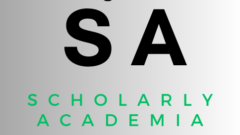COURSE:
NR632: Nurse Executive Concluding Graduate Experience II
Assignment Instructions
- Complete the final assessment (right-hand side) of the AONL Self-Assessment of Professional Competencies document located above, indicating your perceived level of competency for each area.
- Submit your fully completed initial assessment.
SOLUTION
| Initial assessment | Core Competency | End of Practicum assessment |
| Circle the number that best represents your development needs at this point in time.
1= minimal learning need related to this behavior 2= need some practice in this area 3=need significant practice in this area |
Self-assessment of professional competencies will help the graduate student guide their learning experiences in the executive practicum. The following competencies reflect selectedcore competencies for the student in NR631. These competencies are adapted from the competencies identified by The American Organization of Nurse Executives.It is anticipated that the student will identify a number of areas of development at the initial assessment. Goals to meet these needs will guide development of the Learning Agreement.
At the conclusion of the practicum, the student completes the assessment. While it is expected that a student will show growth in the development of skills of the nurse executive, it is not expected that all development needs will be fully met. The student will share the assessment tool with the nurse mentor at the beginning and conclusion of the practicum. This assignment serves as the basis for Week 8 threaded discussion. |
Circle the number that best represents your development needs at this point in time.
1= minimal learning need related to this behavior 2= need some practice in this area 3=need significant practice in this area |
| I. Competency: Communication and relationship-building | ||
| 1 ☐2 ☐ 3☒ | a. Effective Communication
· Makes oral presentations to diverse audiences on nursing, healthcare, and organizational issues. · Produces cogent and persuasive written materials to address nursing, healthcare, and organization issues appropriate to the audience · Resolves and manages conflict |
1 ☒ 2 ☐ 3☐ |
| 1 ☐2 ☒ 3☐ | b. Relationship Management
· Builds trusting, collaborative relationships with: staff, peers, other disciplines and ancillary services, physicians, vendors, community leaders, legislators, and nursing and other educational programs · Follows through on promises and concerns · Cares about people as individuals and demonstrates empathy and concern while ensuring that organizational goals and objectives are met · Accomplishes objectives through persuasion, celebrates successes and accomplishments, and communicates a shared visions · Asserts views in non-threatening, non-judgmental ways |
1 ☒ 2 ☐ 3☐ |
| 1 ☐2 ☒ 3☐ | c. Influencing Behaviors
· Creates and communicates a shared vision · Develops, communicate, and monitors behavior expectations |
1 ☒2 ☐ 3☐ |
| 1 ☐2 ☒ 3☐ | d. Diversity
· Creates an environment which recognizes and values differences in staff, physicians, patients and communities · Assesses current environment and establishes indicators of progress toward cultural competency · Defines diversity in terns of gender, race, religion, ethnicity, sexual orientation, age, etc · Analyzes population data to identify cultural clusters · Confronts inappropriate behaviors and attitudes toward diverse groups · Develops processes to incorporate cultural beliefs into care |
1 ☒2 ☐ 3☐ |
| 1 ☐2 ☒ 3☐ | e. Shared Decision making
· Engages staff and others in decision-making · Promotes decisions that are patient-centered · Provides an environment conducive to opinion-sharing |
1 ☐2 ☒ 3☐ |
| 1 ☐2 ☒ 3☐ | f. Medical Staff Relationships
· Builds credibility with physicians as a champion for patient care, quality and nursing professionalism · Collaborates with medical staff leaders in determining needed patient care · Collaborates with physicians to develop patient care protocols, policies and procedures · Collaborates with physicians to determine patient care equipment and facility needs · Facilities disputes involving physicians and nurses or other disciplines |
1 ☐2 ☒ 3☐ |
| 1 ☐2 ☐ 3☒ | g. Academic Relationships
· Determines current and future supply and demand for nursing care · Identifies educational needs of existing and potential nursing staff |
1 ☒2 ☐ 3☐ |
